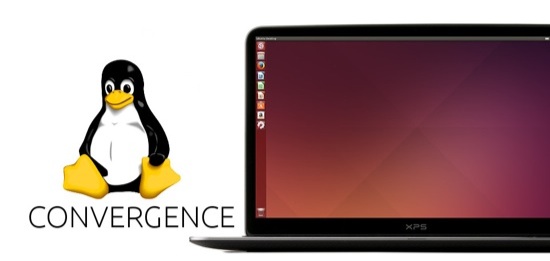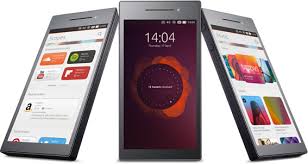
There is one truth that all the Linux faithful hold near and dear to their hearts — that Linux is a leader when it comes to innovation. No other platform has been able to stake that claim for such a long period of time. Even when a different platform unveils something new, many times that innovation can be traced back to Linux.
One such technology is the convergent desktop. The idea behind the convergent desktop is simple — a seamless transition from mobile to desktop (or laptop). This all started, for better or worse, with Ubuntu Edge. The idea behind Ubuntu Edge was brilliant: A high-end smartphone that, when plugged into a dock, would serve as a traditional desktop. Although the project ultimately failed (due to an inability to raise the $32 million dollars necessary to bring Ubuntu Edge to life), the idea stuck and now every platform is in a race to deliver the convergent desktop.
 First off, why is this idea even considered to be of importance? That answer is simple. Mobile devices have overtaken the desktop in both usage and sales. For example, in 2013 desktop sales totalled (in the thousands of units) 315,229, whereas smartphone sales totalled 1,875,774. That is a sizable difference. Clearly, people (especially younger generations) depend upon their smartphones more than their desktops. Because of that, the transition between mobile device to desktop will eventually need to become seamless. The desktop and the mobile experience will have to become one — otherwise, the desktop will continue to stagnate and users will, more often than not, defer to the platform they know best — the smartphone. To that end, convergence has to be a crucial factor for desktop OS designers/developers.
First off, why is this idea even considered to be of importance? That answer is simple. Mobile devices have overtaken the desktop in both usage and sales. For example, in 2013 desktop sales totalled (in the thousands of units) 315,229, whereas smartphone sales totalled 1,875,774. That is a sizable difference. Clearly, people (especially younger generations) depend upon their smartphones more than their desktops. Because of that, the transition between mobile device to desktop will eventually need to become seamless. The desktop and the mobile experience will have to become one — otherwise, the desktop will continue to stagnate and users will, more often than not, defer to the platform they know best — the smartphone. To that end, convergence has to be a crucial factor for desktop OS designers/developers.
The Linux community understands this — as was made clear by Canonical’s first efforts with Ubuntu Edge. With that project scrapped, Canonical is now looking at the Ubuntu Unity interface being the primary driving force behind the convergent desktop. When Canonical made the controversial switch to Unity, their goal was one interface for all devices — from smartphone, to tablet, to laptop, to desktop, to server. If you knew Unity, you could use any device. Simple.
Why is convergence important?
The big question, however, turns back on itself and asks “Why is convergence so important to Linux?” Although many may argue the importance of convergence, it cannot be denied this technology will be a giant leap toward bridging the gap between mobile and desktop devices. The ability to simply dock a smartphone and have all files and data instantly and automatically in sync is the golden ring of mobile efficiency — even beyond the cloud. The first platform to grab that ring will immediately be launched to the head of the pack.
But for Linux, it’s about more than just leading the march, it’s about claiming its right as a leader in innovation. For so many years, the competition has borrowed technological advances from Linux and called them theirs. Those “innovations” have led the world to see the competition as superior — when, in so many instances, they are just copying what Linux has brought to the table. At this moment, that is all in the past and the one innovation Linux needs to be known for is convergence. It was the Linux community that dreamed up the idea of melding the mobile and desktop platforms together and should they (read Canonical) fail to succeed and another platform achieve the goal, Linux will be seen, again, as the “little platform that could”. We’ll get a pat on the back, a “nice effort”, and not much more. Linux needs to bring convergence to light before any other platform to prove itself a leader, to establish itself at the head of the class in innovation — a title it should already enjoy.
Convergence is Linux’s baby to birth and Canonical already stands above the competition in development. But should either Apple or Microsoft succeed in bringing to market a convergent desktop before Linux, we’ll be faced with another failure…another year in the 1 percent market share range… and this time, it could stick. A failure to produce convergence could also equate to Linux smartphone failure.
Good Timing
The timing for the Linux convergent desktop could not be better. With a Linux-based mobile platform already ranked #1 in the world (Android achieved 85% market share in Q2 of 2014) and another Linux-based platform (ChromeOS) helping to drive sales of another platform (Chromebooks) to number one, Linux could not be better primed for a major success. If Canonical delivers both the Ubuntu Phone and the means to converge it with the Ubuntu desktop, the success this would bring can not be overstated.
Much to the chagrin of a good portion of the Linux community, the importance of this rests squarely on the shoulders of Canonical and Ubuntu. Regardless of your opinion toward Canonical and Ubuntu, they are closer than any other company or distribution to realizing the goal of either the pure Linux phone or the convergent desktop. And imagine how this would go over: With Android, with Chromebooks, and with the convergent mobile-to-desktop experience of Ubuntu — Linux would become the technological desktop force most of us already know it to be.
Linux needs convergence, not just as a badge of honor or to say “We did this first!”, but to have both consumers and businesses take Linux seriously (as both a desktop platform and a leader in innovation). No matter where your opinion of convergence or Ubuntu stands, if you want Linux to continue moving forward (and gaining significant moment in the upcoming years), you should want this for your platform of choice.


